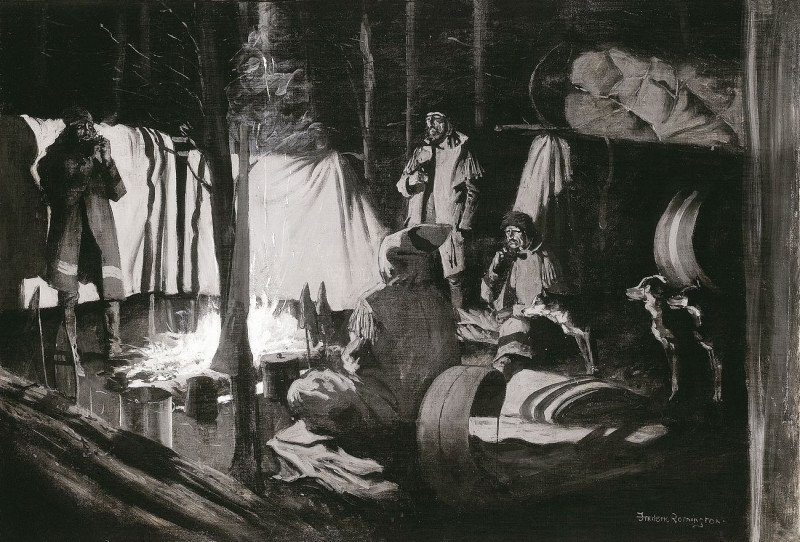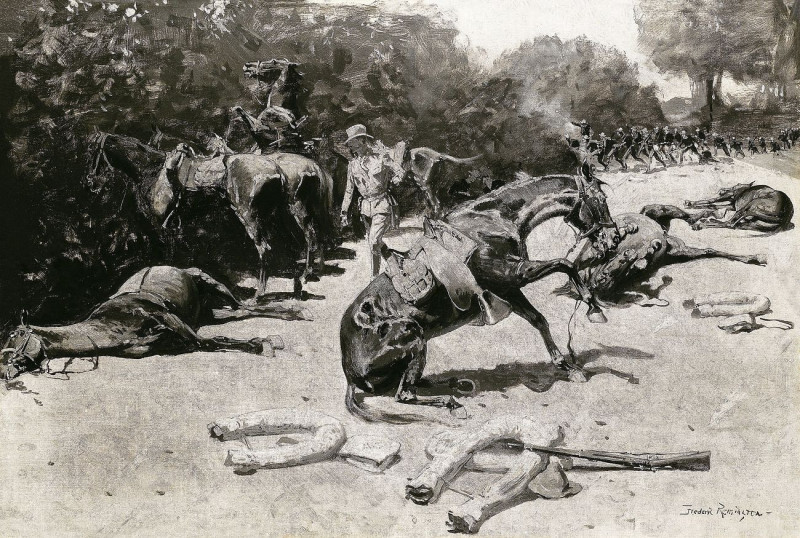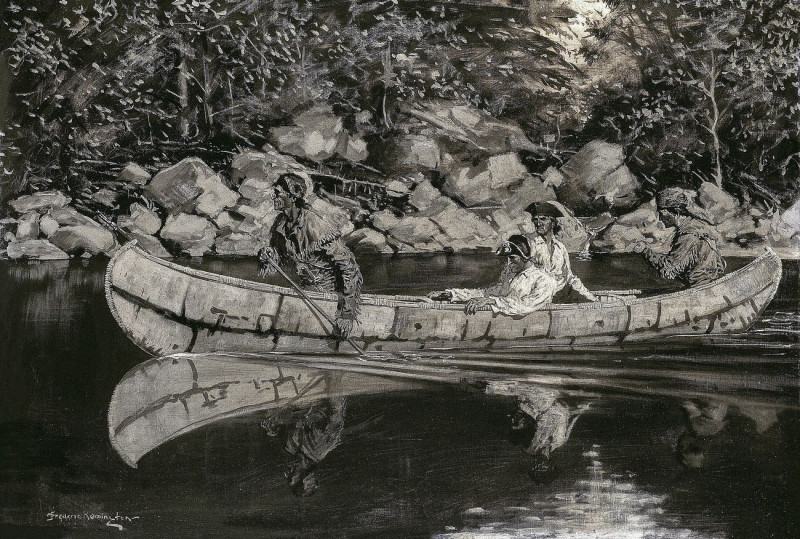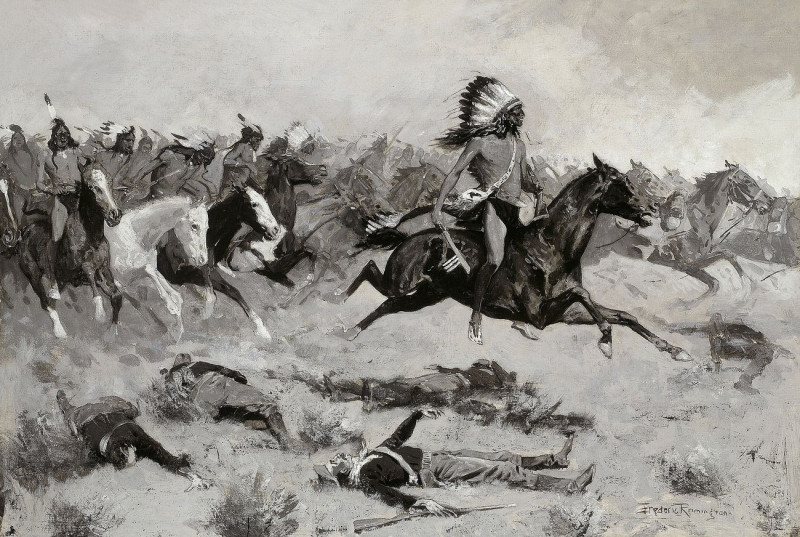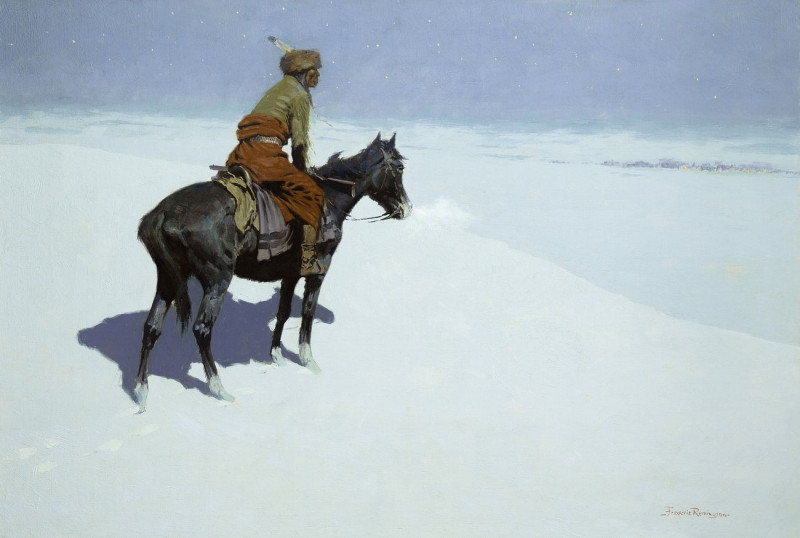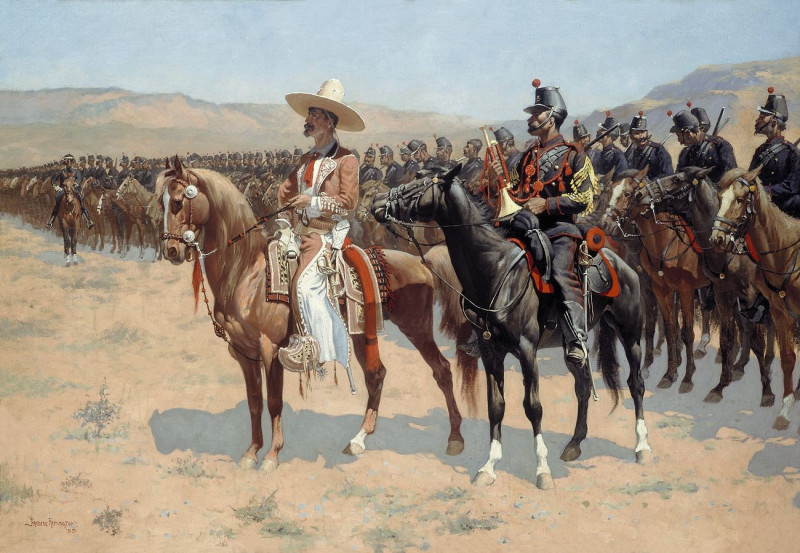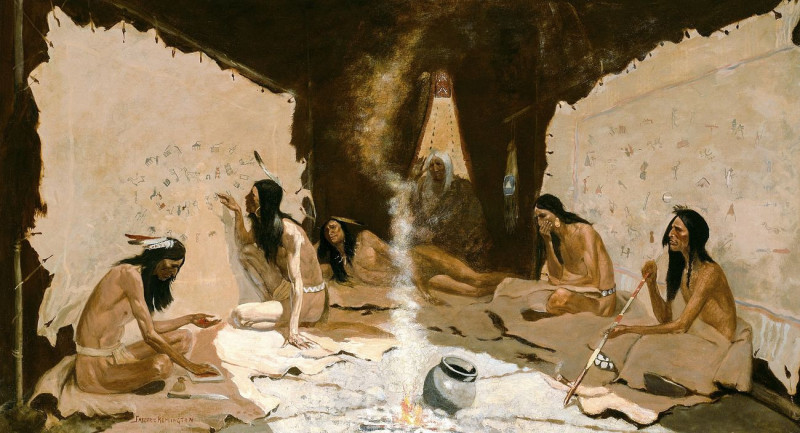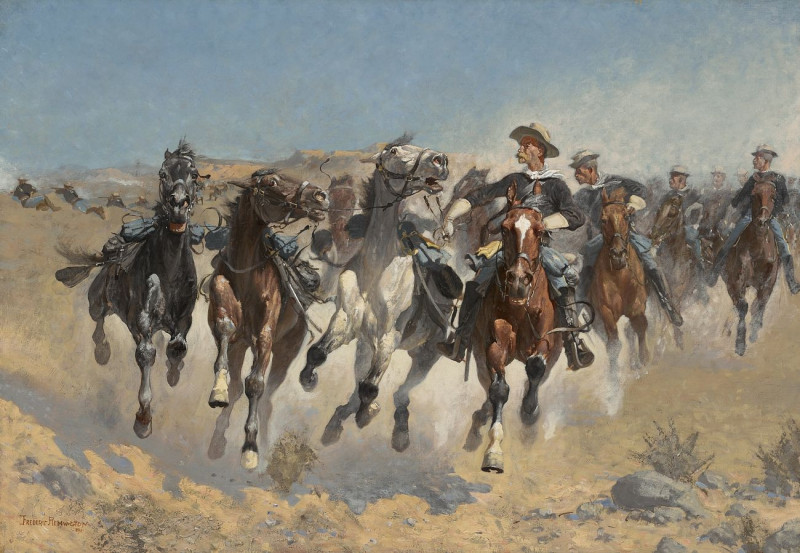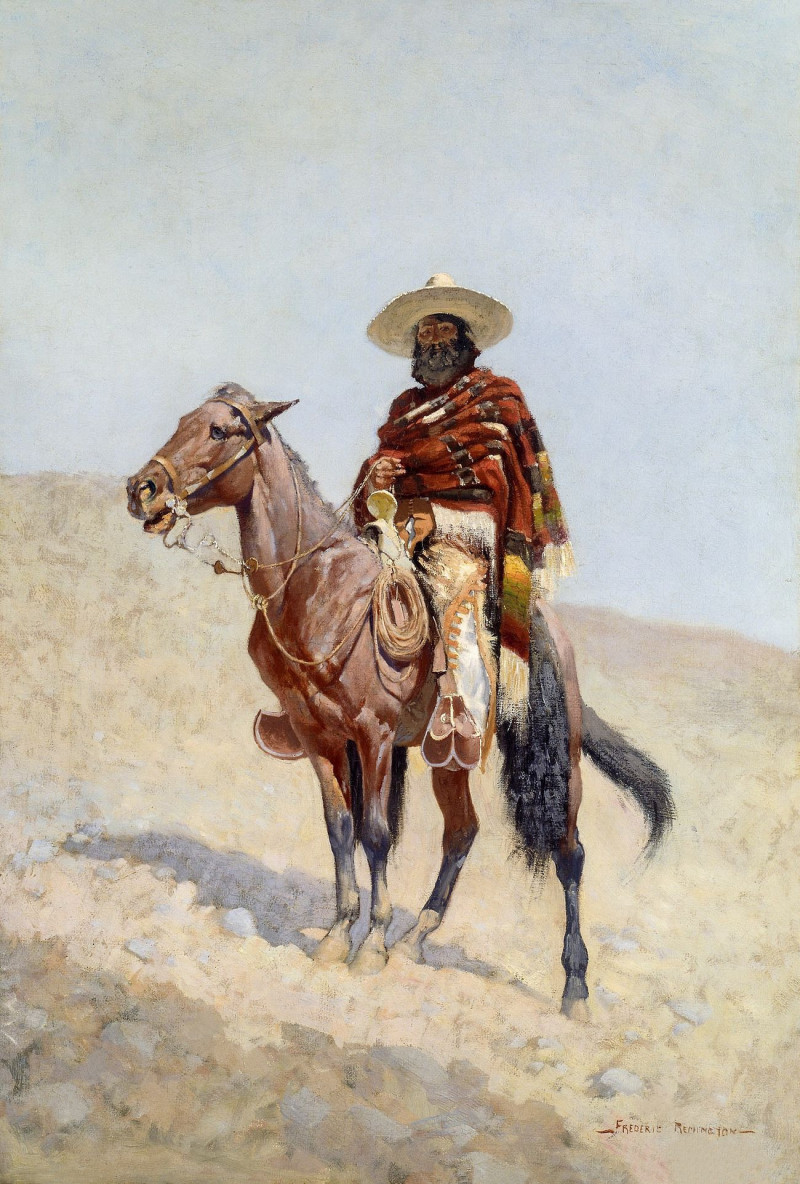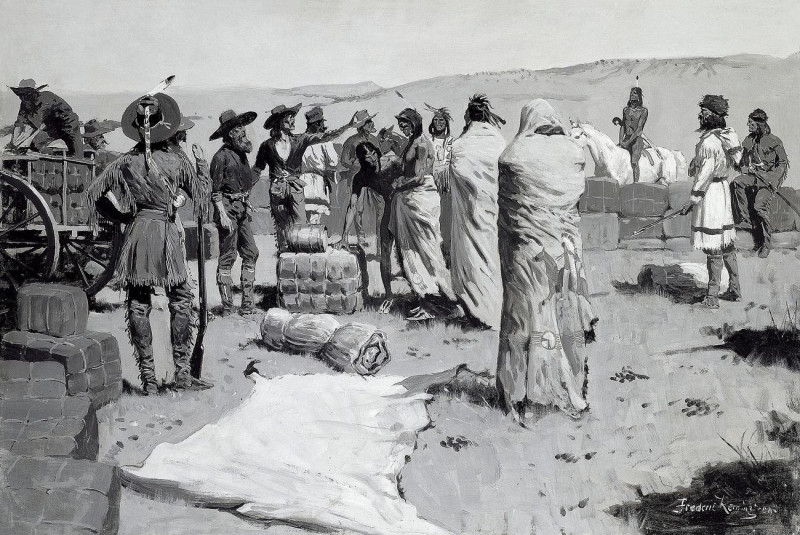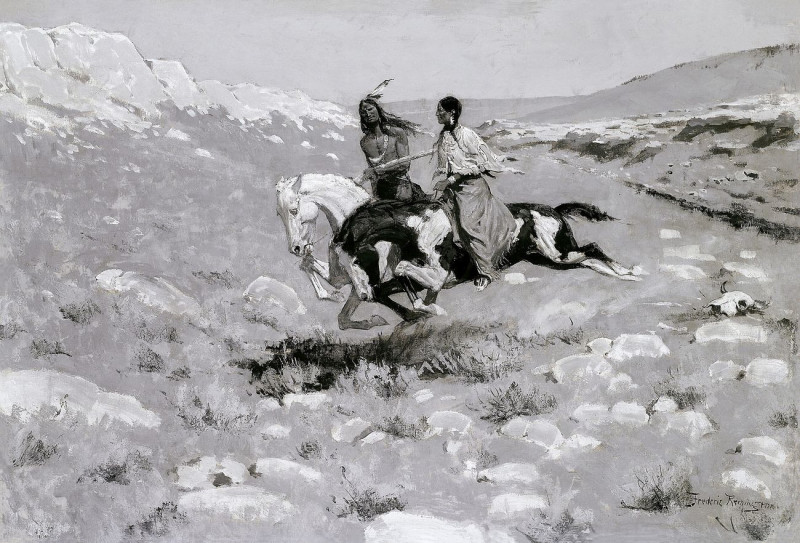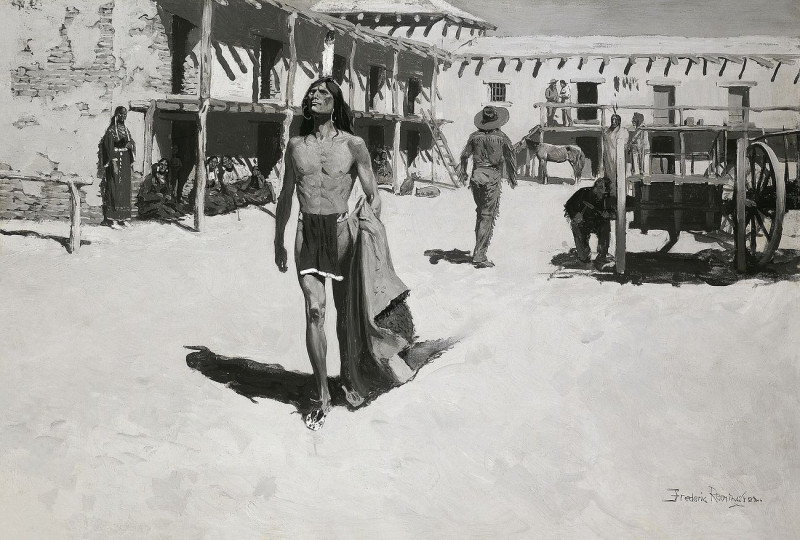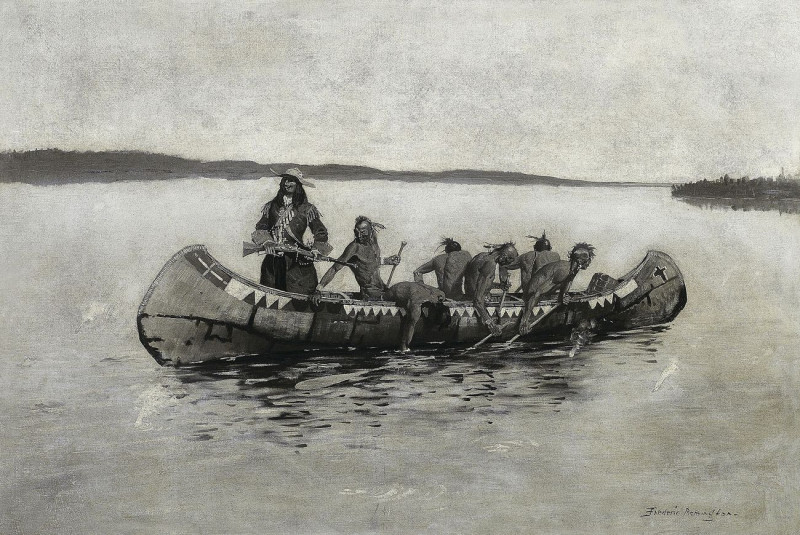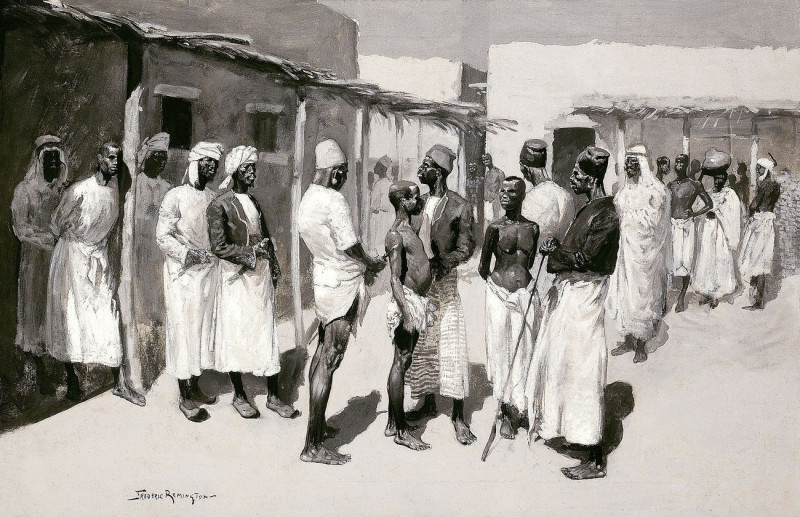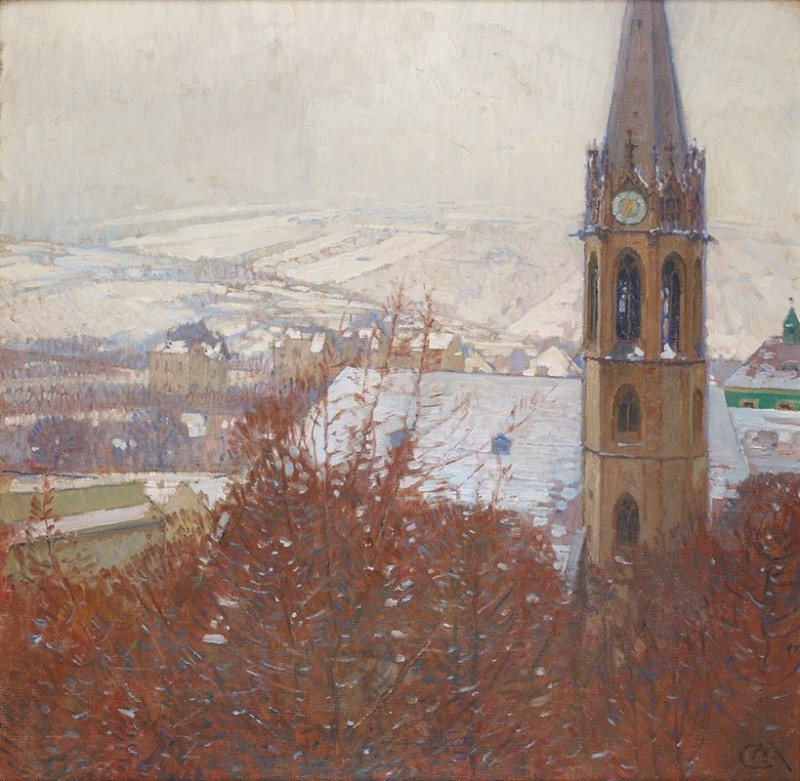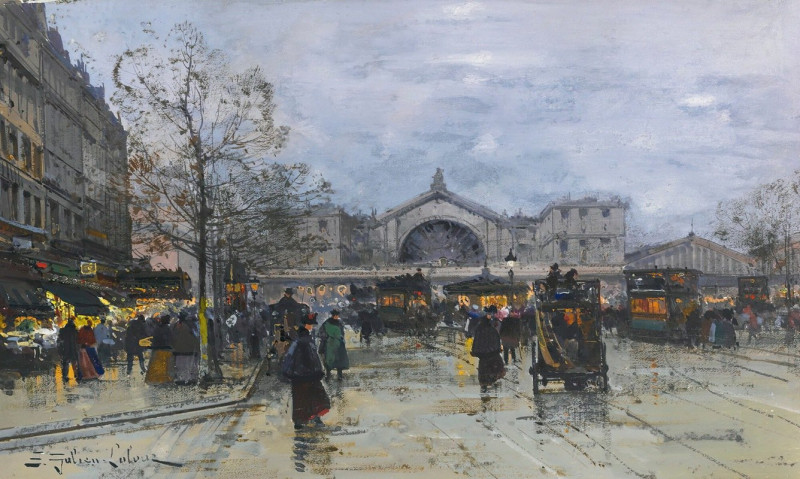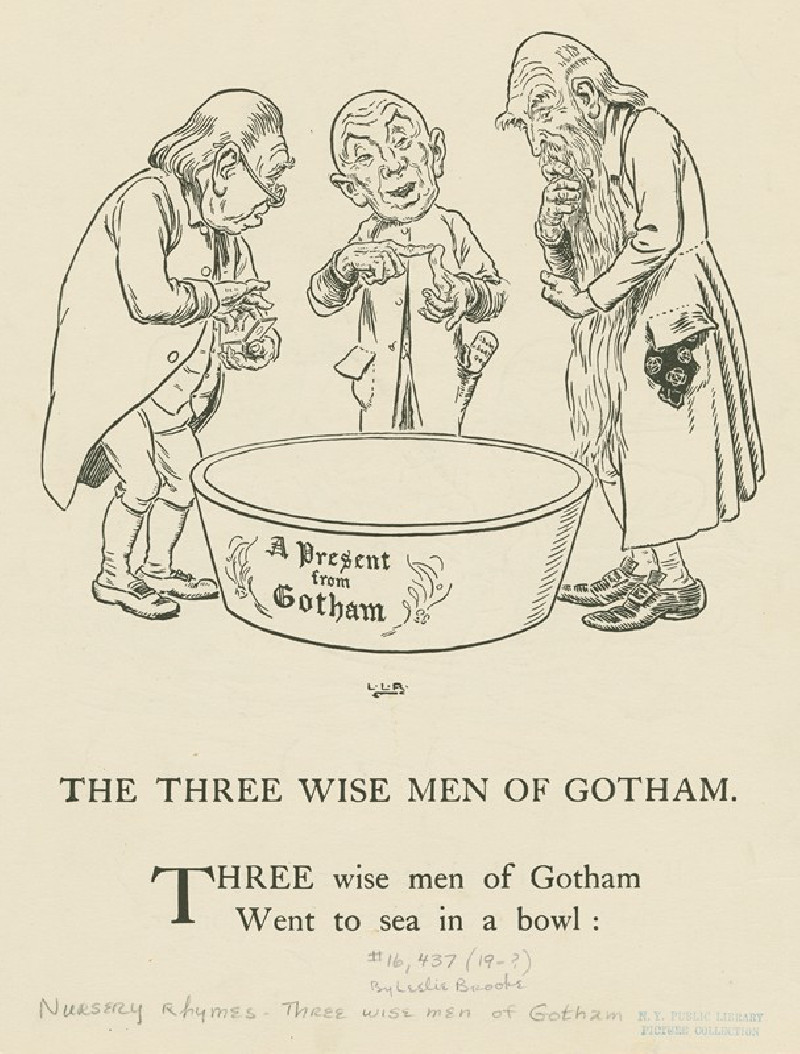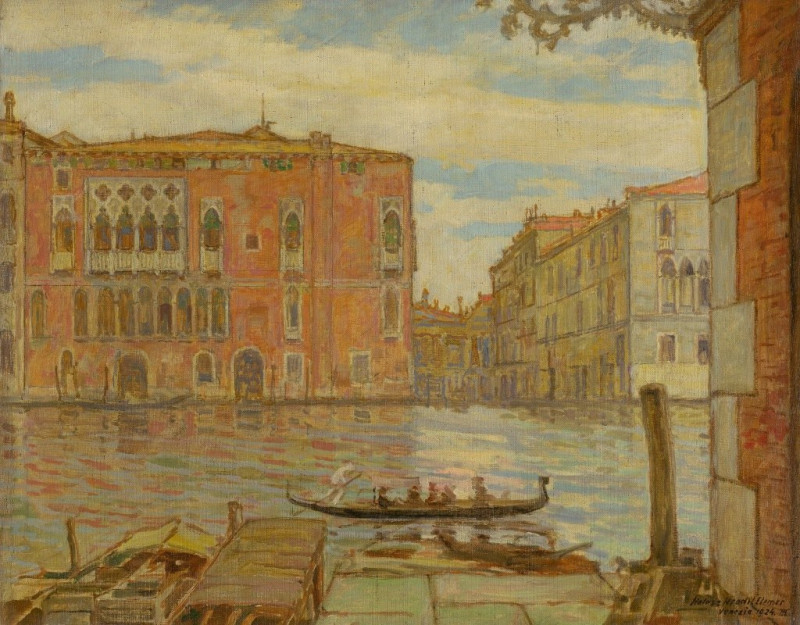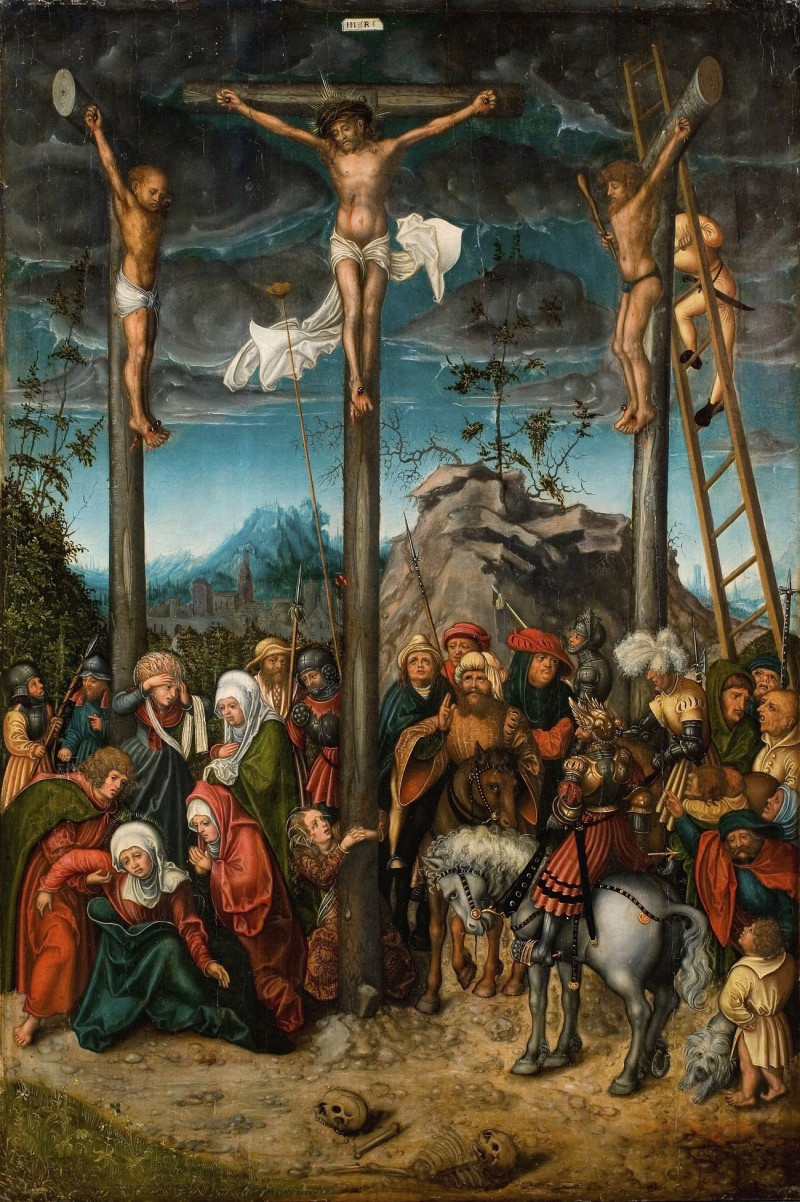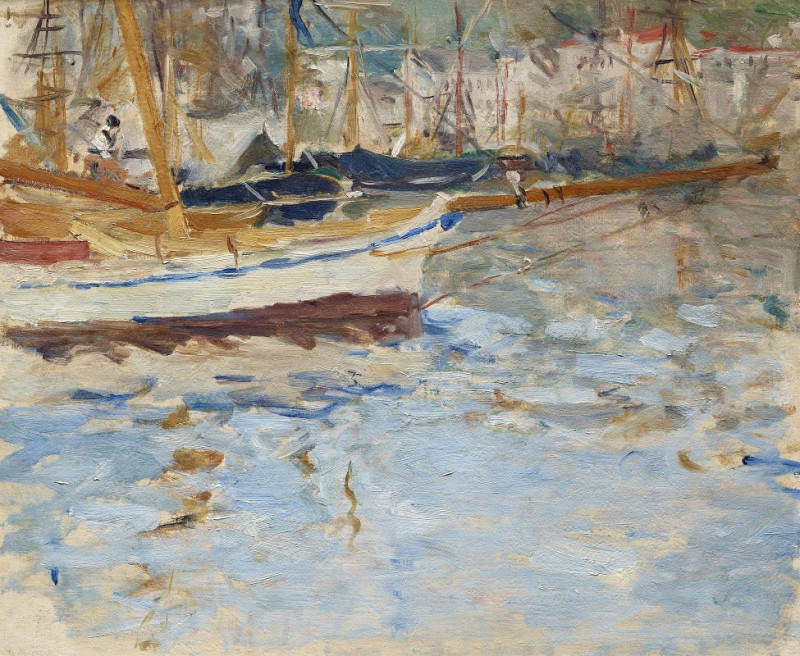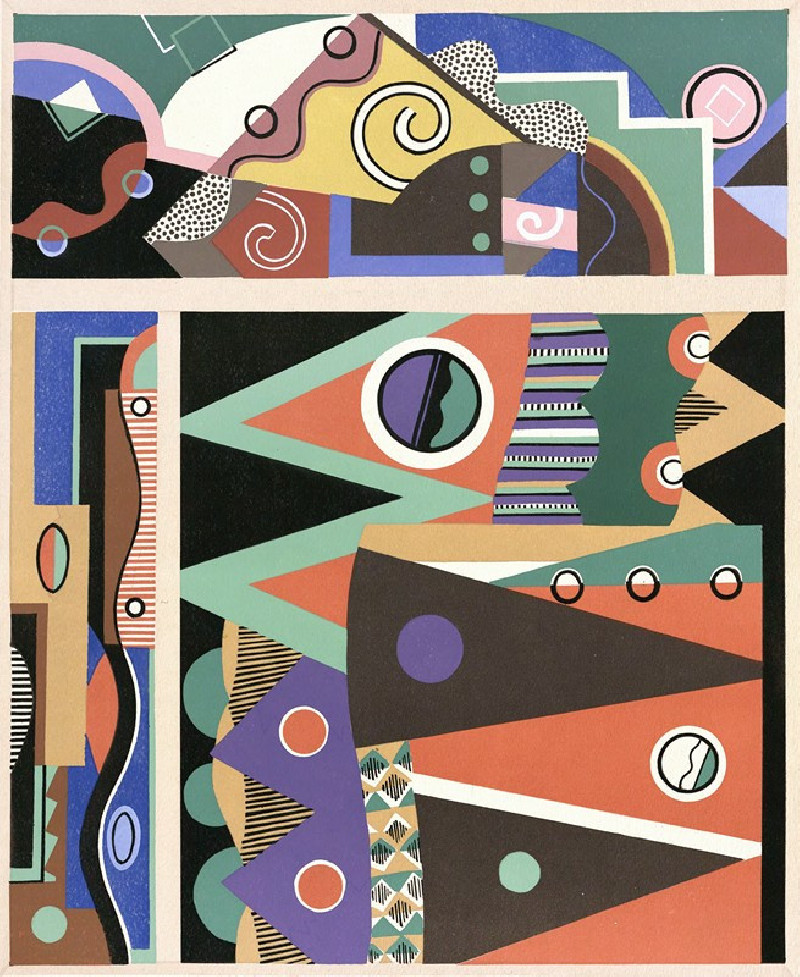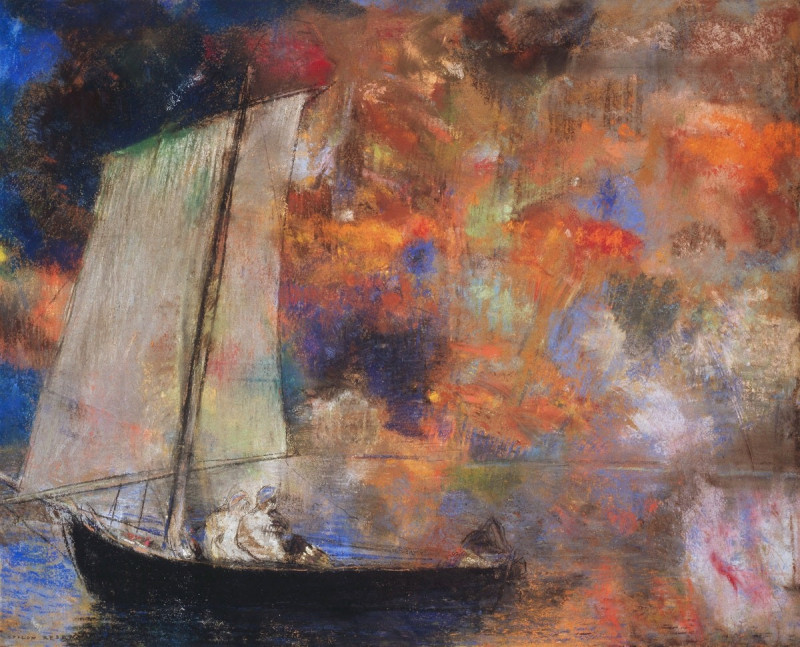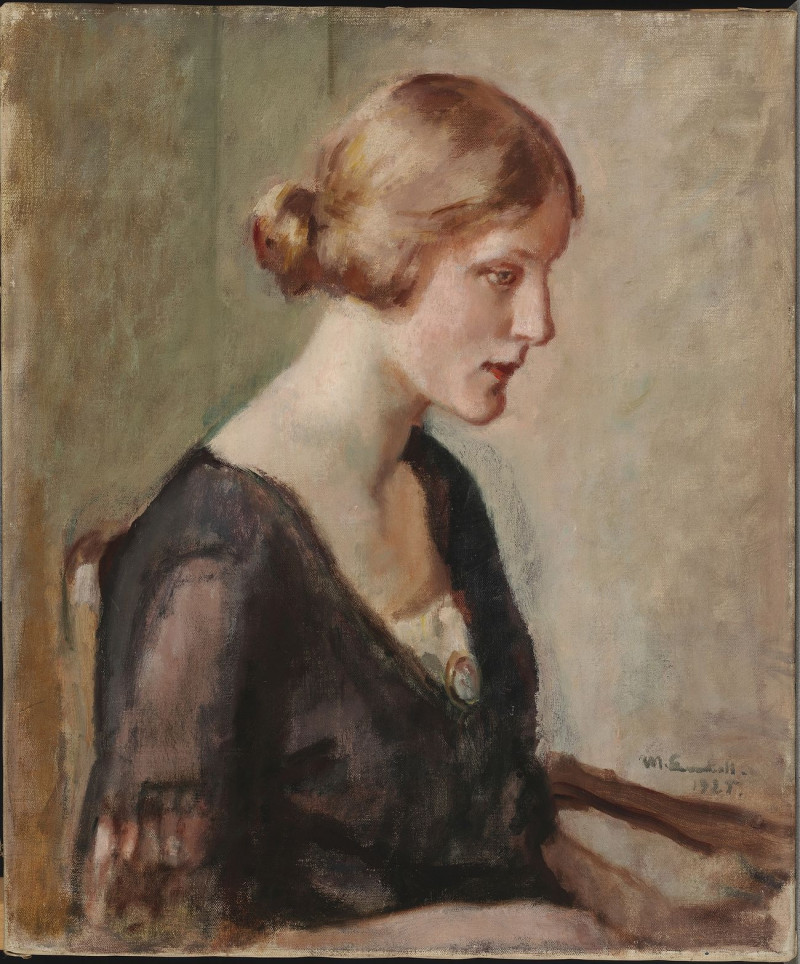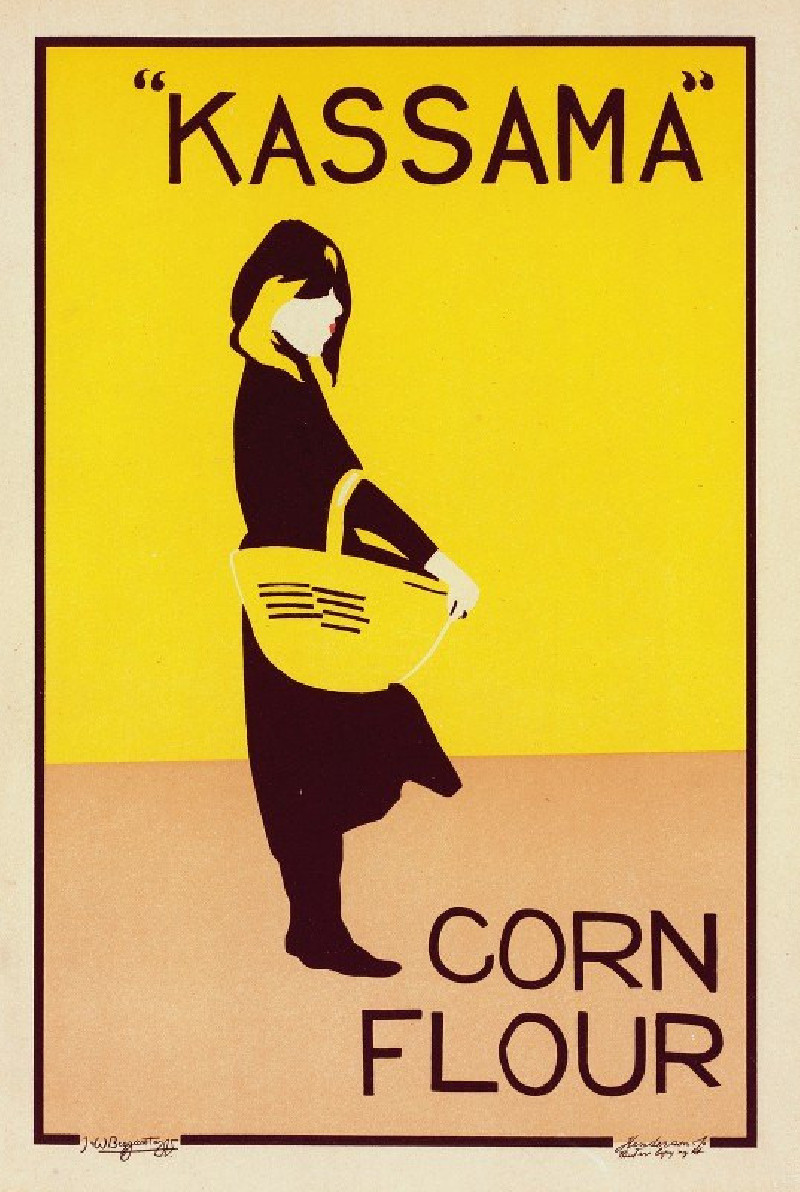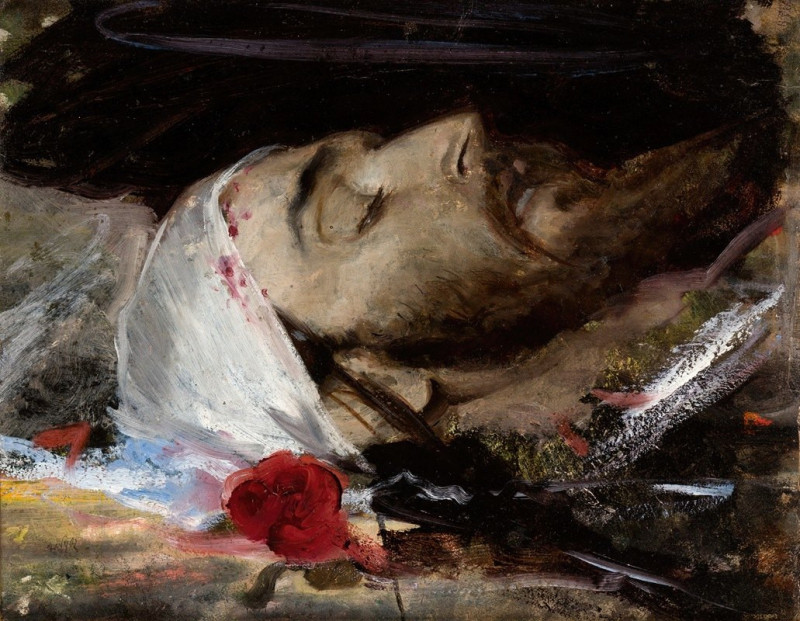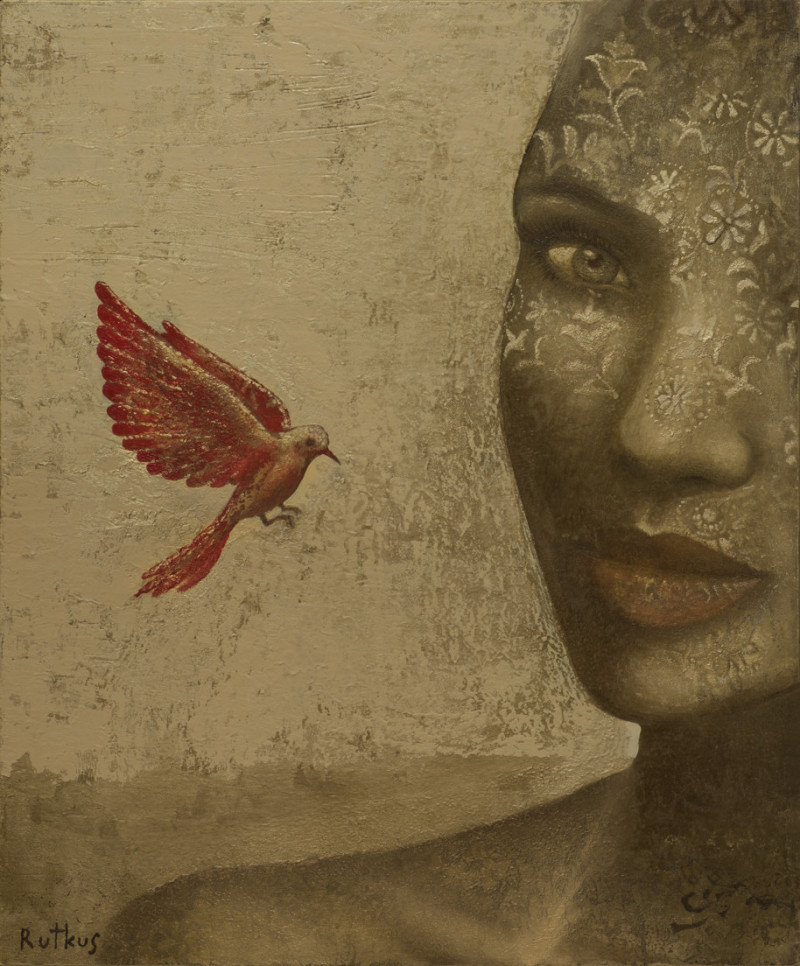I Will Tell The White Man
Technique: Giclée quality print
Recommended by our customers
More about this artwork
The painting "I Will Tell The White Man" by Frederic Remington captures a poignant scene set inside a Native American council tent. The tent is shaded and somber, providing a stark canvas for the figures depicted within. The composition is centered around a Native American man standing and addressing a circle of seated tribal leaders and elders, some of whom wear traditional regalia such as feathered headdresses and tribal garments while others are shown in simpler attire.The mood seems serious and contemplative, suggesting that the standing man may be reporting important news or discussing critical matters, possibly regarding relations with white settlers or government officials, as hinted by the painting's title. The lighting focuses on the central figure, highlighting him against the darker, subdued background of the tent, drawing the viewer’s attention to his expression and posture, possibly underlining the weight of his words.Each figure is rendered in detailed brush strokes, emphasizing their individual reactions and engagement in the discussion. Remington's use of contrast, with the bright light centering on the protagonist and the darker shadows enveloping the group, enhances the sense of a significant, possibly solemn gathering.Overall, the painting provides a narrative snapshot of leadership, community deliberation, and the gravity of cross-cultural interactions and decisions, characteristic of Remington's exploration of themes from the American West and the dynamics between Native American communities and their changing world.
Delivery
Returns
Frederic Remington (1861–1909) was an American painter, illustrator, sculptor, and writer. He had a great interest in the American Old West, concentrating on the image of cowboys, Native Americans, horses, and the US cavalry. He rose to prominence with interpretations of frontier life, with many of his illustrations published in popular journals such as Harper’s Weekly and Pearson’s Magazine. His nocturnal paintings were filled with color and light, moonlight, firelight, and candlelight.


